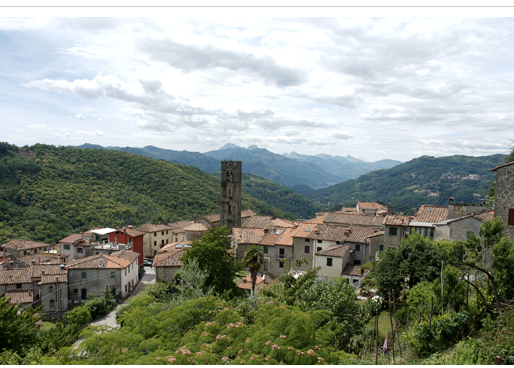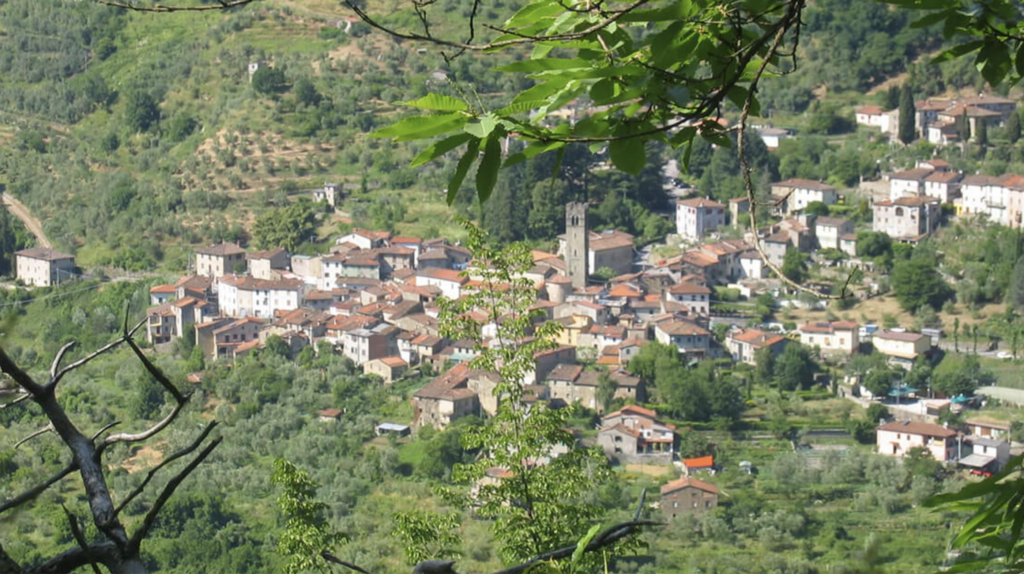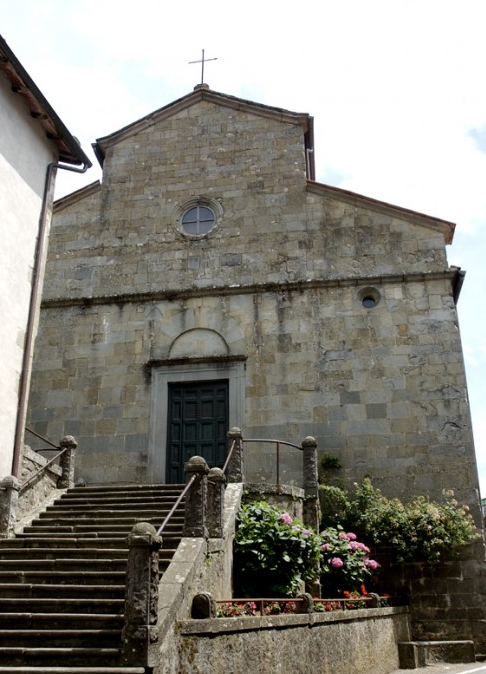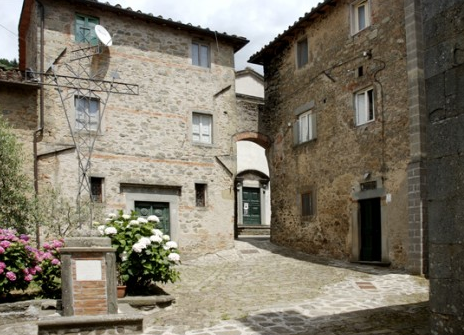QUILIETTI Maria Alfonsa Domenica 1876/Benabio


Benabbio is situated 479 meters above sea level and its 5 kilometers from Bagni di Lucca. on to Collodi and the Valleriana. This road was built at the end of the last century and connects Benabbio with Bagni di Lucca. At the beginning of the road to Benabbio theres a place called Dominillo and theres a beautiful view of the town and the surrounding mountains.

Entering Benabbio there is the square Santa Maria and the parish church Santa Maria Assunta. The church was built in 1338 and there is an inscription on the side of the church that looks onto the square. It has three aisles with pillars and ornate capitals, the roof is made with wooden beams.In the apse a triptych of Baldassarre of the late Biagio of Florence commissioned by the men of Benabbio in 1469 the alter-piece has is its centre the Virgin Mary with Child and on the sides two pairs of saints, San Michele Pietro and San Giovanni Battista e Bartolomeo.
The History
It was first remembered in a parchment of 983. Originally it was called Menabia then Menabbio, but no-ones certain where it originates from. Benabbio was owned by the Lupar family, the most representative was known as Lupo,remembered as a poet and known for his connection with Castrucciuo Castracani degli Antelminelli. Lupari had sweared to the town of Lucca to look after and defend the Apennine Mountains and to make sure no-one trespasses from other provinces, but Lupo showed that he was a violent man and never listened to the orders given to him from Lucca.
In 1334 there was an outbreak of war between Lucchesi and Florentines, Lupo was ordered to send all of his men to help Castruccio, but he only sent half of them favouring the occupation of the village of Cerbaiola by the Florentines. But at Altopascio the Lucchesi beat the Florentines then they went to Benabbio to punish Lupo. He was banned from the Republic and fled to Bologna. But a legend tells that he is buried in a tunnel under the castle; where one can enter a well still existing today. The population was famous for its warlike spirit and were known as the best soldiers in the Val di Lima, and even the Province of Lucca used them. In 1798 the population made a revolt against the French forcing them to abandon the village. The French Philosopher Michel de Montaigne visited Benabbio in the summer of 1581 and he describes it asa village big and beautiful

In the house that sits on the Colle di Belvedere in 1837 Luigi Napoleone Bonaparte (Napoleone III) found refuge with the help of duke Carlo Ludovico when he was persuaded by the King of France Luigi Filippo.
Benabbio was the most populated village in the area, in the year 1566 it had 1600 inhabitants. The antique statutes have been lost but two remain of the 18th century one in the archives of the town council dated 1781 and one in the archives of the state of Lucca. Around the years
Famous People
Benabbio was the native birthplace to Father Antonio Cianelli (1753/1827)-author.
Antonio Vivani 1770 (died at Lucca 1830)-poet at Rome and wrote verses for the court of the King of Naples.
Rodolfo Pierotti (1845-1909)-engineer, elected 6 times member of parliament (fought for the unity of Italy).
Francesco Cianelli (1838-1910)-teacher in the seminary of Lucca and Author of numerous inscriptions.